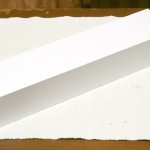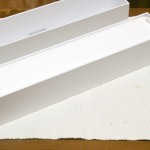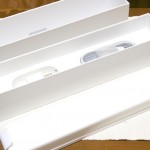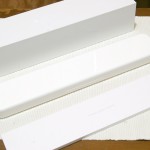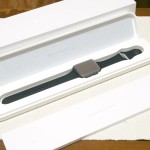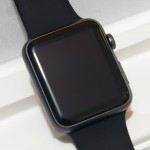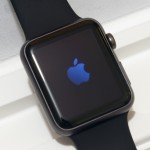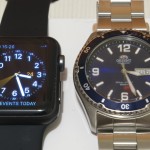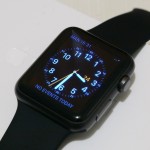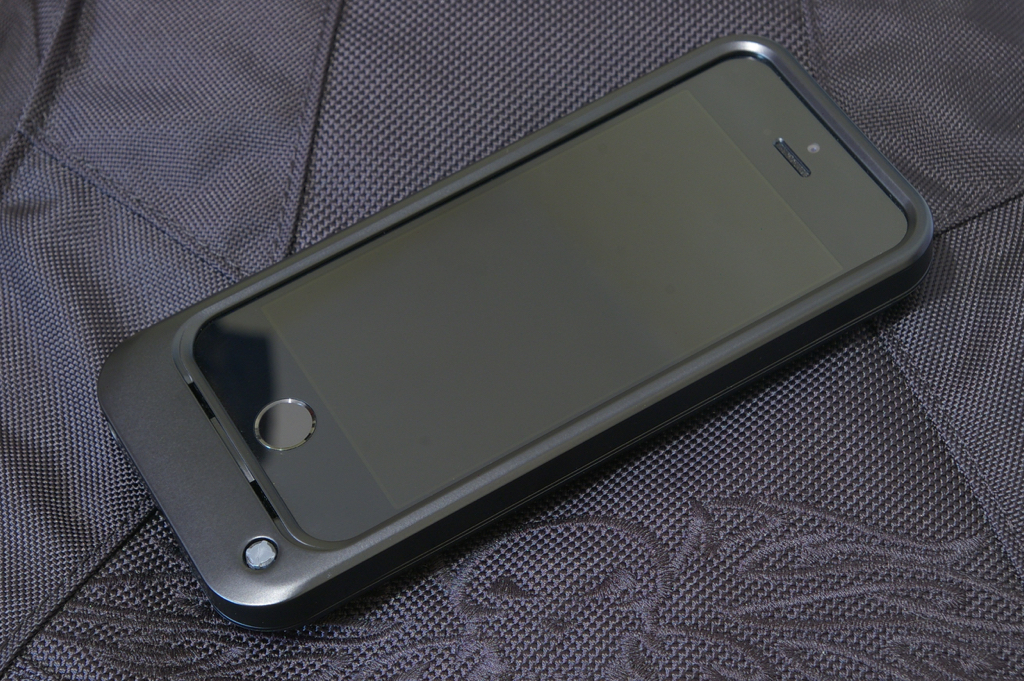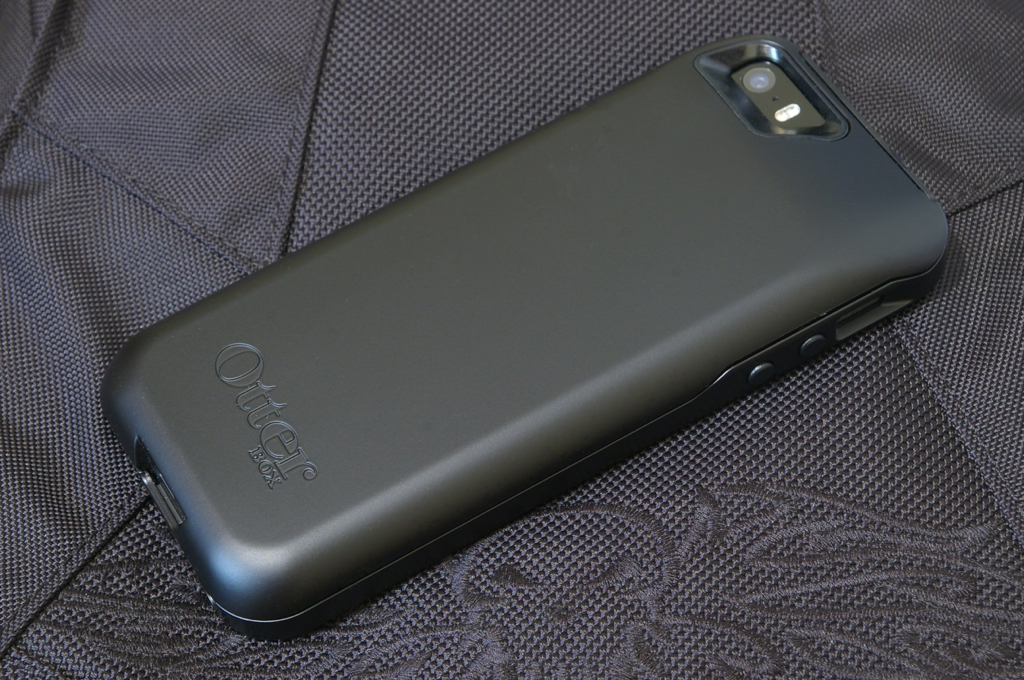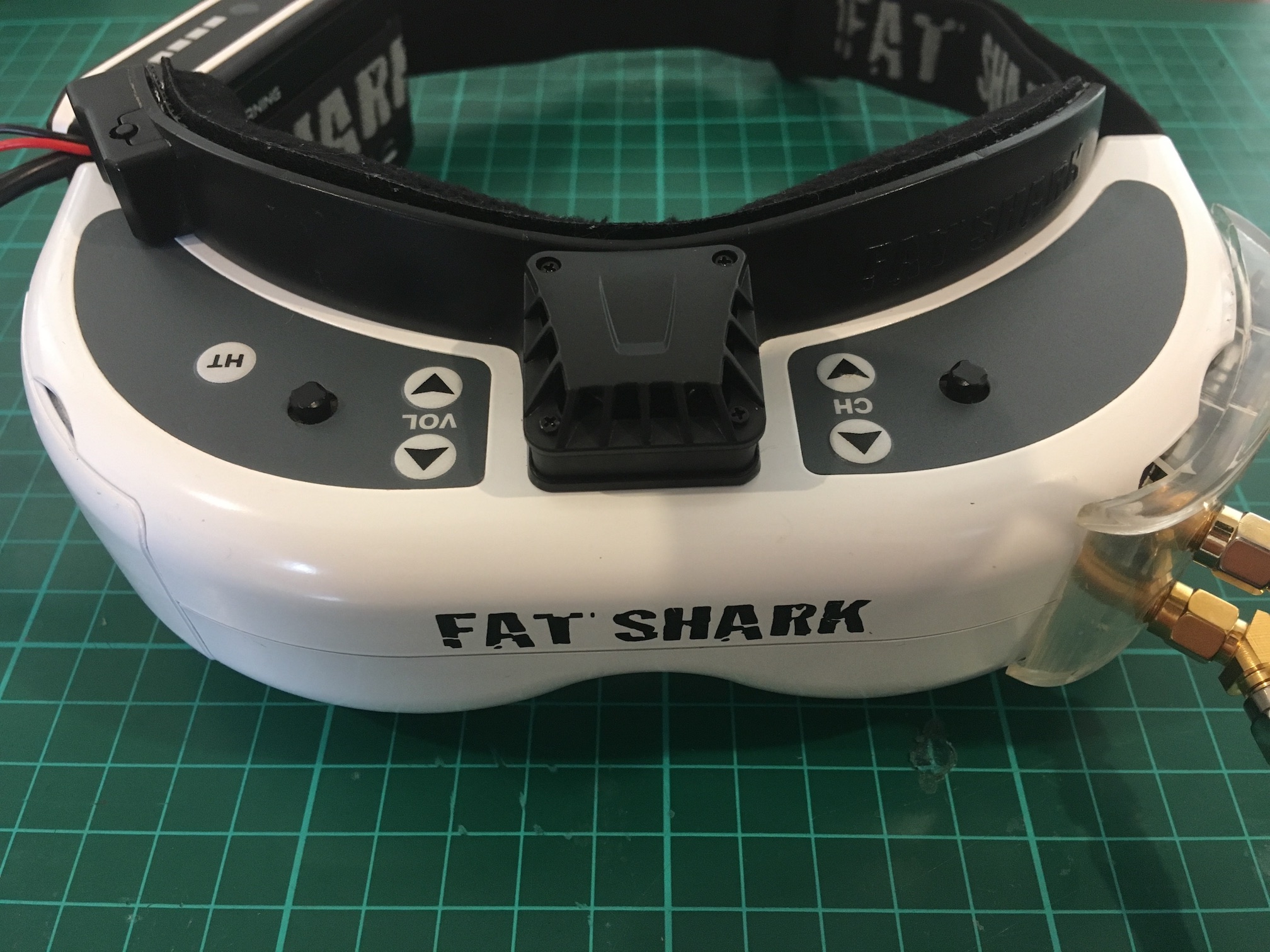 I finally bit the bullet and pulled the trigger on my first real FPV goggles. I’m used to the wide field of view of my OTG receiver with Android phone mounted on a VR headset so I wanted to have the widest FOV possible. The widest would have been the Dominator HD2 at 50 degrees but I’m actually fine down to the 42 degrees of the Dominator HD3. So when I spotted a well-cared for Dominator HD at 45 degrees, I grabbed it.
I finally bit the bullet and pulled the trigger on my first real FPV goggles. I’m used to the wide field of view of my OTG receiver with Android phone mounted on a VR headset so I wanted to have the widest FOV possible. The widest would have been the Dominator HD2 at 50 degrees but I’m actually fine down to the 42 degrees of the Dominator HD3. So when I spotted a well-cared for Dominator HD at 45 degrees, I grabbed it.
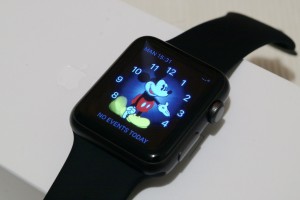 I got my hands on Edong’s Apple Watch Sport and, with his permission, I unboxed it, took some photos, and played with it a bit.
I got my hands on Edong’s Apple Watch Sport and, with his permission, I unboxed it, took some photos, and played with it a bit.
The packaging is unusually big and bulky for Apple who have been steadily reducing the size of their product packaging for years. But it seems to be part of their premium and luxury message for the Apple Watch.
The 42mm case is rectangular and made of aluminium with a space grey anodized coating. Everything is smooth and rounded with no sharp edges or corners to be seen or felt. Knowing beforehand that it is 42mm, I wasn’t expecting that it would be quite small and light. But it is.
The Ion-X screen covers the whole face and is rounded at the edges. It is black and shiny when off and the display is very sharp when on. Nice to look at in either state. It has force-touch which means touching it with varying levels of force result in different actions. It is also very responsive though force-touching needs some getting used to.
The digital crown on the right side is big and quite effortless to turn and push. So with the other button.
The back has those scifi-looking sensors for reading your heart-rate.
The strap is black silicone rubber with a clever clasp. You button it on and slip the excess strap under the clasp. Very neat. And you can change straps or bracelets without any tools.
The whole watch is well-built. It looks and feels the high-end device you expect from Apple. Even more, it looks and feels like a futuristic device from science fiction. But aside from small nods to traditional watches it doesn’t pretend to be a watch but instead steps ahead and defines itself as a new class of wrist wear, the so-called smartwatch.
It looks like Apple has another winner on its hand (or wrist).
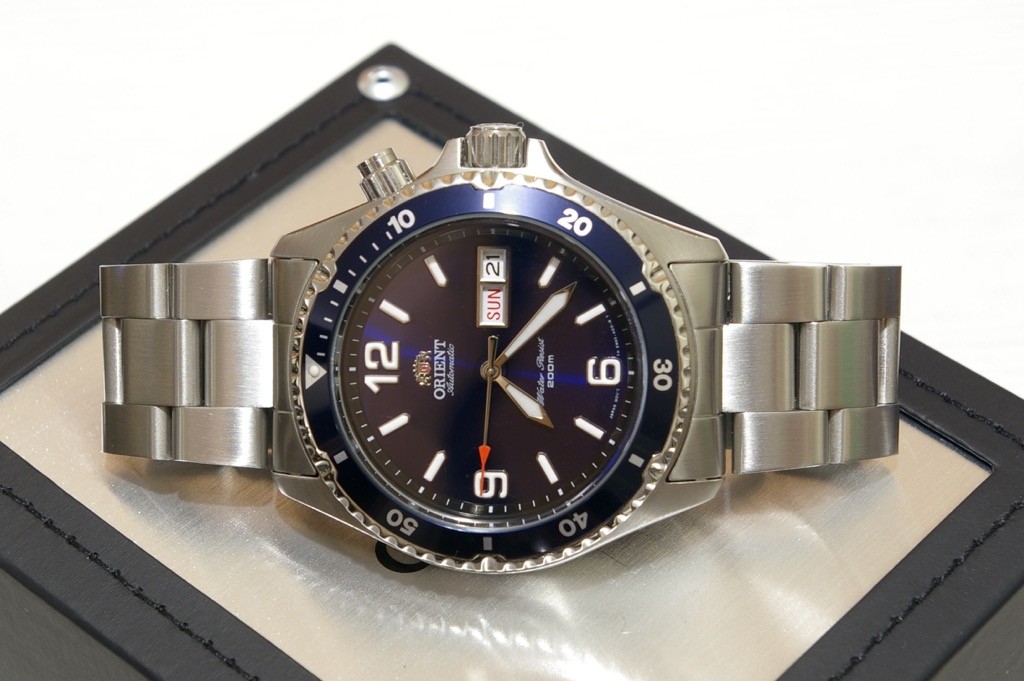 Since the demise of my Suunto Observer, I’ve been looking on-and-off for a stainless steel watch that is more casual and less toolish than my Casio G-Shock. After a whole lot of research, I finally got an Orient Mako.
Since the demise of my Suunto Observer, I’ve been looking on-and-off for a stainless steel watch that is more casual and less toolish than my Casio G-Shock. After a whole lot of research, I finally got an Orient Mako.
Heard of Orient? I haven’t until fairly recently. Orient is supposedly Japan’s largest manufacturer of mechanical watches. It was founded in 1950. Since 2001, it has been a subsidiary of Seiko Epson Corporation, one of three core companies of the Seiko Group. But it operates independently from Seiko Watch which is owned by Seiko Holdings, another core company of the Seiko Group. It has its own product line and manufactures its movements in-house. To me that means it is a serious watch maker instead of someone who designs the outer bits and just throws in someone else’s movements.
The Mako uses the Orient Cal. 46943 movement. It is a tried and tested automatic movement but it doesn’t have manual winding and hacking (stopping the seconds hand). However a few shakes is all it takes to get the watch started and you can approximate hacking by very slowly turning the crown clockwise when adjusting the time. The movement also has day and date complications with quick set. The day is set is done via a pusher at 2 o’clock. The date is set the conventional way by pulling the crown further out and turning it.
The dial is a very deep metallic blue with a radial ray pattern. It is absolutely gorgeous to look at. On the upper half of the dial there’s an applied Orient logo and just below it is “Orient” and just below it “Automatic” in script. On the lower half, there’s “Water Resist” in script and just below it “200m”. It has big applied Arabic numerals at 6, 9, and 12 hours and rectangular indices for the remaining hours. All are chrome-outlined and lumed. The hour and minute sword hands are also chrome-outlined and lumed. The seconds hand is chromed with a red arrow tip. No lume this time.
The bezel is a deep blue and often appears black in dim lighting. It is unidirectional with 60 clicks. It has scalloping all around with slightly bigger scallops at the 5 minute mark and every 10 minutes onward. The scalloping appear to have been stamped instead of machined. Or maybe it was overpolished. Anyway, the result is that the scallop edges are smooth and makes it a bit harder to grip and turn the bezel.
The 41.5mm case is round and made of stainless steel. The sides and bottom are mirror polished while top is circular brushed. The face, unfortunately, is just mineral glass. The caseback has nicely detailed engravings including the Orient logo. The screw-down crown is big and easy to grip. It is signed with the Orient logo. The day pusher has a screw-down collar that prevents accidental pushing and changing of the day (and flooding if you were underwater).
The bracelet is stainless steel and based on the popular Oyster design. It has polished sides and brushed top and bottom. The links are solid (not folded) but the end links are not. Adjustment is done with split pins. The clasp is made of sheet steel. It has a triple locking design and signed on the outside with the Orient logo.
The overall look and feel of the watch is unmistakably that of a quintessential dive watch as heavily influenced by the (in)famous Rolex Submariner. But it is different enough to have its own identity and just as refined enough to be worn on a day to day basis and not just on dives.
But the best thing is that for all these good qualities, it is a quite a bargain at less than $200.
Rating: 5/5
iPhones don’t exactly have the best battery life. With normal use, they last me about a day. But with heavy use, which is often, I’d be lucky if they last till the evening. So I considered either a battery case or a power bank to address this limitation. Once, I spotted a Mophie Juice Pack but due to budget considerations I didn’t get it. When I finally decided to, I couldn’t find one anymore. So I settled for a power bank which does work but can sometimes a bit unwieldy and often get left behind. Then last Friday, I was looking at OtterBox cases when I saw the Resurgence. Being an avid OtterBox fan, I immediately got it.
The Resurgence is composed of two pieces. The front piece covers the sides and wraps around the edges giving the screen a slightly raised protective bezel. This protects the screen from direct contact when the phone is face down. The buttons have touch-through covers that are easy to press. Unfortunately, they are a bit loose and rattle when your shake the case. There are ports for the speakers that channel sound to the front. Finally, there are cutouts for the silent switch and the charging button on the back piece. The silent switch is still easily accessible with a finger.
The back piece is a big chunk that holds the battery. There are cutouts for the camera, flash, and silent switch. At the bottom portion, it has an internal Lightning plug, a micro USB port, a through-port for headphones, and the charging button which also acts as a battery level and charging indicator. It is coated with a black smooth material which seems less rubbery and more durable than similar coatings.
To install, you slide the phone inside the back piece and into the Lightning plug. Then you snap the front piece over the phone. The case comes with just a bit of charge from the factory so the first step is to charge using the included micro USB cable. Once charged, you press the charging button to see the battery level. There are four lights arranged around the button which shows the charge level in 25% increments. To charge, you press and hold the button for 3 seconds. To stop charging, you do the same thing.
The whole case fits the iPhone snugly and in fact it is very difficult to remove the phone. It looks quite rugged and could bounce off the floor. In fact, it is military-rated for drop protection (MIL STD 810G-516.6; Do note the Applicability to “ruggedized” consumer products section). So for a rugged battery case, I think it’s pretty good. I like it better than the Mophie Juice Pack though I’m not sure if it’s as rugged as the Mophie Juice Pack Pro.
Now for the bad stuff. The battery, although advertised to give you 2x (as in phone lasts twice as long), so far only get me (starting from below than 10%) to just around 70-80%. Quite frankly, that sucks. I’m hoping a few cycles will result in improvements. Another problem is that the charging button seems to be prone to cracking. Finally, there are quite a few molding imperfections on the casing. They’re small but they’re there. All these is unfortunate as OtterBox has, in the past, been known for quality. It seems the stiff competition is forcing it to cut corners. That’s bad news for both OtterBox and us.
Rating: 3/5
 A few months ago, I decided to refurbish my quite old Oakley Fives Squared. I polished the metallic Os and the lenses. But the lenses still left a lot to be desired so I ordered replacement lenses from Visionary Lenses via Amazon. The first package got lost in transit. I got in touch with VL and they immediately sent a new package which finally did arrive. Well actually I had to go to the post office and pick it up. The lenses were just as described and fit perfectly.
A few months ago, I decided to refurbish my quite old Oakley Fives Squared. I polished the metallic Os and the lenses. But the lenses still left a lot to be desired so I ordered replacement lenses from Visionary Lenses via Amazon. The first package got lost in transit. I got in touch with VL and they immediately sent a new package which finally did arrive. Well actually I had to go to the post office and pick it up. The lenses were just as described and fit perfectly.
